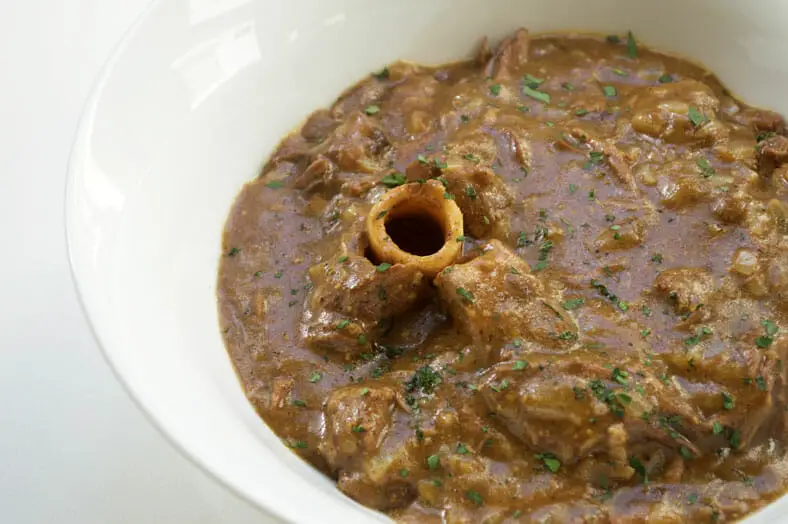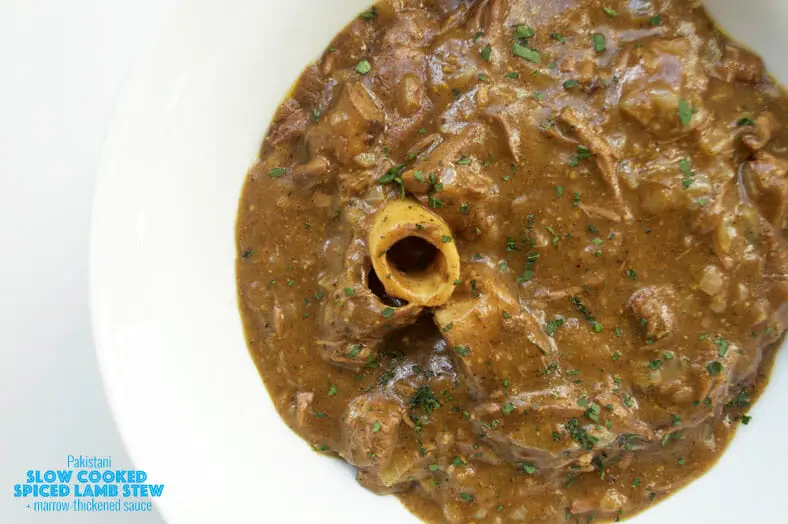Nihari is a slow cooked lamb shank recipe with flavorful spices. It is a dish with a captivating history and remarkable popularity on the Indian subcontinent. Typical of a recipe whose history begins in the 16th century, there are varying opinions on its true origin.
Was nihari a dish served to the wealthy Nawab rulers of the Mughal Empire? Or did the nobles serve it to laborers to energize them for the day’s work?
Let’s take a look.

NIHARI: THE MUGHAL EMPIRE, THE NAWAB, AND LABORERS
A recipe with an interesting history is a wonderful treat even before the first bite. We love learning about ancient ingredients and how they’ve changed in the history of the world, but discovering an entire recipe with its own tale to tell is an unmatched delight.
Nihari harkens back to the Mughal Empire founded in the 16th century in South Asia. Its history binds India and Pakistan – nations with a difficult past, you could say – together with a mutual, centuries-long love for the dish.
BABUR AND THE MUGHAL EMPIRE
The Mughal Empire (not to be confused with the Mongol Empire) began in 1526 CE when a Turk royal named Babur conquered the last head of the Delhi sultanate in India. Babur was escaping the encroachment of the Uzbegs onto his home territory, and this particular conquest in Delhi provided him an opportunity to establish an empire.
We know we said not to confuse the Mughals with the Mongols, but interestingly, Babur himself descended from the great Genghis Khan, the founder of the Mongol Empire. So long before Babur was a twinkle in his mother’s eye, Marco Polo was crossing Asia to reach Karakoram to speak with the Kublai Khan, one of Babur’s distant relatives. Creating empires sure did run in the family!
But back to Babur. He arrived in Delhi and did all you need when starting a new empire. He conquered additional territories and invited different religions in the region to the table in order to establish a state of peace and harmony.
And he had sons. His son Humayan succeeded him on the throne, but it was Humayan’s son Akbar who left the greatest impact on the Empire. His impact was so great, in fact, that he is called Akbar the Great.
Akbar expanded the borders of the Mughal Empire across present day Pakistan and Afghanistan and southward across India. More so than the expansion of the empire, Akbar the Great exercised religious tolerance, bringing peace to the Hindu, Muslim and Buddhist communities in the empire. It’s for this forward thinking that he’s considered a Great.
There’s debate as to exactly where in the Mughal empire – especially between Indian and Pakistani territories – nihari was first cooked, but the consensus is that it’s a culinary invention directly linkable to this great Empire’s reign.
You May Also Like…
If you love lamb shanks, and meats like this you’ll love our Meat Pasta made with beef shank (but can be substituted for lamb shank or brisket).
If you love lamb in general, you might want to check out our other recipe on an Albanian lamb with yogurt casserole (tave kosi).
Or, if you just love this type of yogurt sauce, you might enjoy our other recipe on a braised beef loin with sour cream sauce from Austria.
NIHARI FOR THE NAWAB
Oh, to have been a Nawab in the Mughal Empire!
The title of Nawab was bestowed unto semiautonomous Muslim rulers of states within the Mughal Empire. They were essentially noblemen or royals, and they were the administrators of a territory tasked with maintaining the Empire’s sovereignty on the land.
As part of their faith, the Nawab prayed five times a day. Their day began with the Fajr, the first of the five daily prayers said by Muslims, around the time for sunrise.
One story about nihari’s origin is that it was the perfect meal to tide hungry prayers over between the Fajr and the Zuhr prayer after midday. Because the dish was so rich, it was also common practice for the Nawab to take a long nap in between prayers. To begin the day with breakfast, a rich meal and a nap, life must have been extremely luxurious for them!
This all-day practice became so institutionalized in the Nawab way of living that they affectionately named the stew nihari after the Arabic word for nahar, or day.
BREAKFAST FOR THE LABORERS
But even if it began as a noble course, the reason behind nihari and its post-Mughal longevity lies in its popularity with the working class. Once it was introduced, the masses loved the dish and continue to love it to this day.
According to legend, the wealthy Nawab were looking for ways to save wage costs, so they thought to offer their laborers delicious nihari instead. As a dish, nihari was perfect, since they could feed their workers one rich meal in the morning that would provide enough energy for toiling throughout the day.
Couple that with another theory that the well-spiced stew offered cures to ailments like the common cold, fever and flu, and you can see why nihari was a no-brainer for the Nawabs to offer.
Regardless of how it really came about, though, nihari has become a centerpiece in many different South Indian cuisines and is considered Pakistan’s unofficial national dish. It’s eaten very frequently for lunch and dinner, and some even still eat it for breakfast before a hard day’s work.
ABOUT THE RECIPE
We know one theory behind the day-related name of nihari. It’s derived from the Arabic word nahar for day and potentially the daily routines of Mughal elite.
However, there’s another theory (and one much more pertinent to the recipe itself) that nihari has its name because it would traditionally take a full day to cook. We’ll see in a bit that modern variations – even some using pressure cookers (though ours doesn’t) – have made the recipe more palatable to the modern working schedule, but other preparations of nihari could still call for overnight stewing in an earthenware pot.
Whichever recipe you go by, though, just keep in mind the essence of preparing nihari: it will need to stew on its own for a long while.

The goals for this are twofold. First, you want the meat to be almost “fall off the bone” tender when it comes serving time. Second, enough cooking time allows the marrows from the bone to cook into the sauce and thicken its consistency nicely.
But the key for nihari’s flavor comes from the spices. The lamb cooks in a braising liquid seasoned with the likes of coriander, pepper, ginger, turmeric and a sort of homemade garam masala blend.
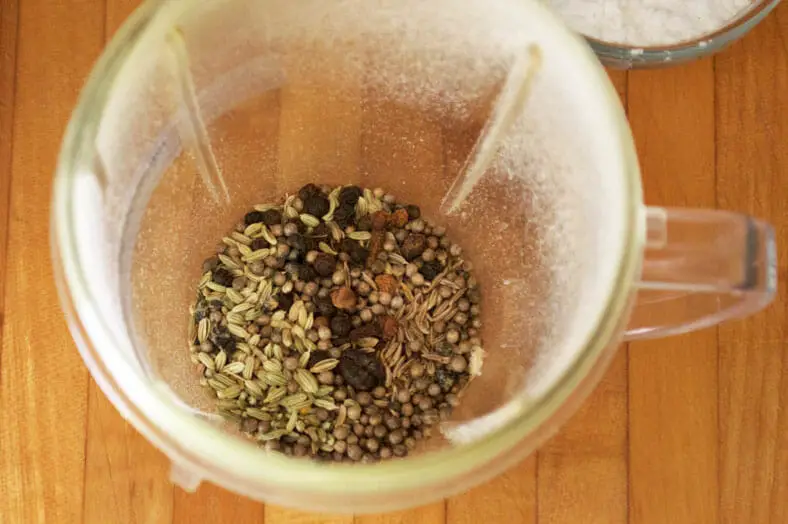
As in any other lamb braising, it’s best to pre-sear your lamb piece in a cooking fat at a very high heat for a few minutes. For the meat itself, a tenderer cut of lamb like a shank is more common nowadays since it’ll take less time and is easier to cook through. Just be sure to keep some bone intact for your stew!
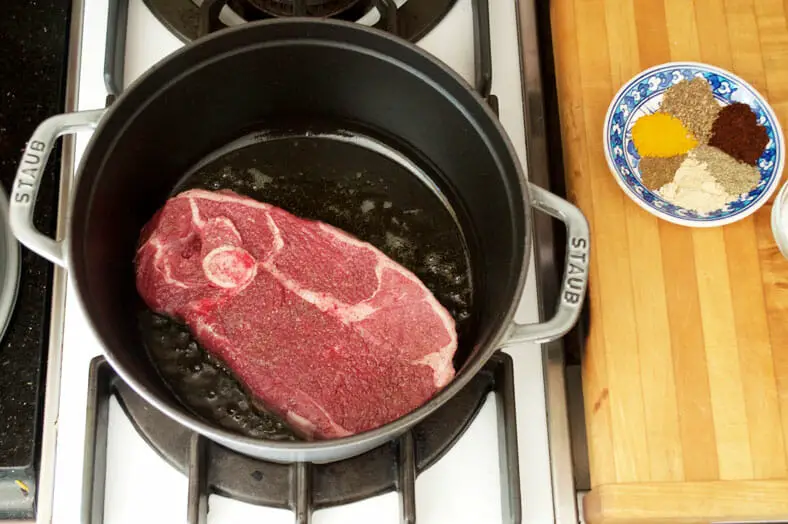
Once you have seared lamb, you’ll pour a various set of slurries on top of it. Start by creating a mixture of water and your aromatic spices. Pour it over and around the lamb to season it and make sure both sides are well coated in spice. After a minute or two, top it with your next slurry of a flour mixed into more water.
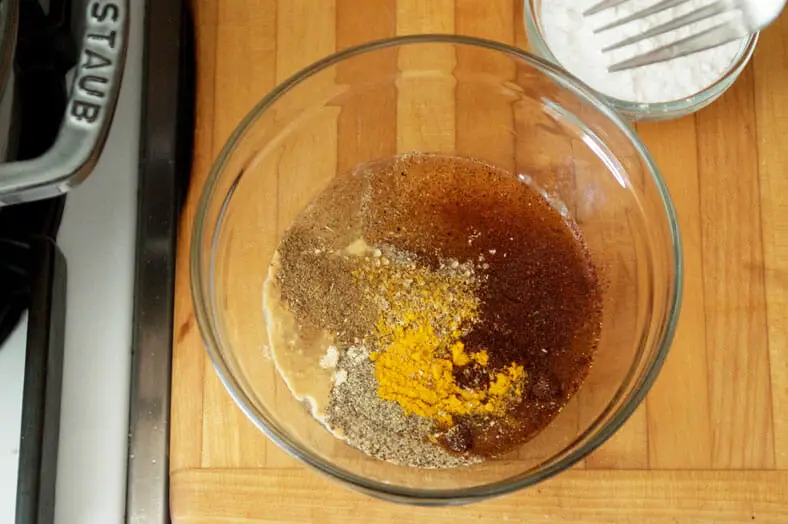
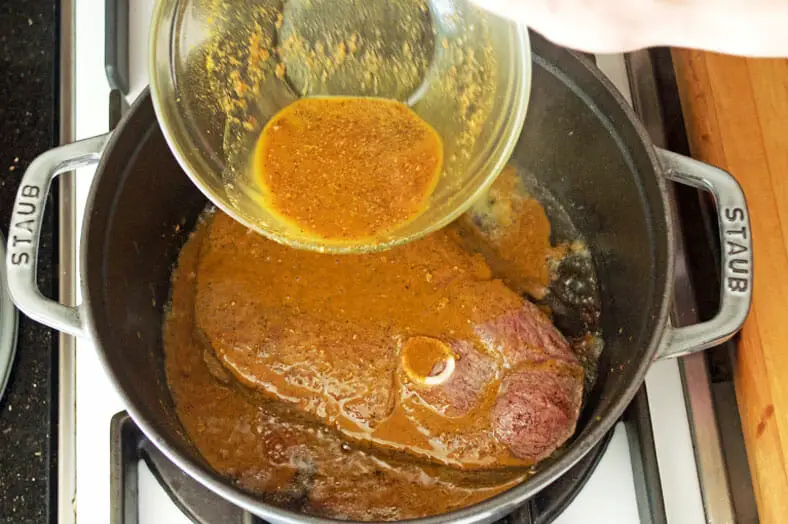

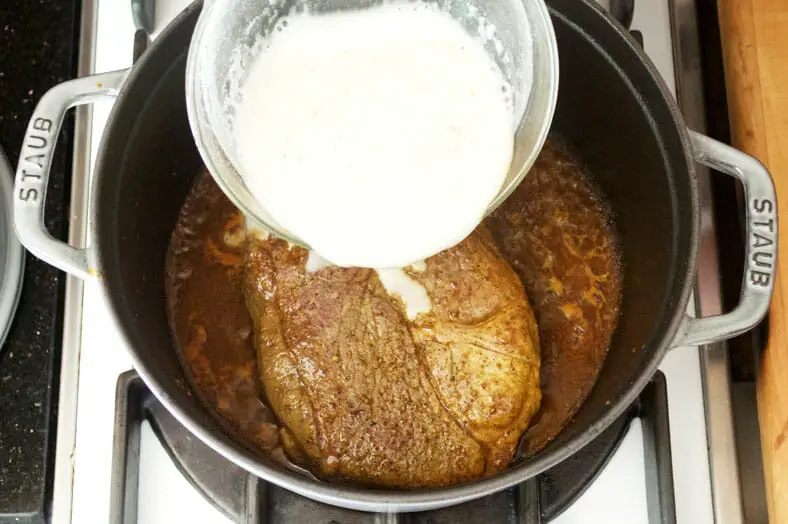
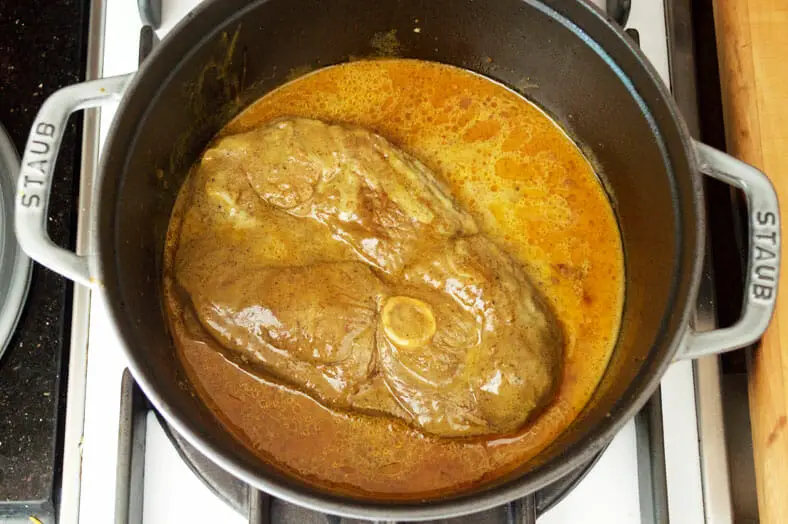

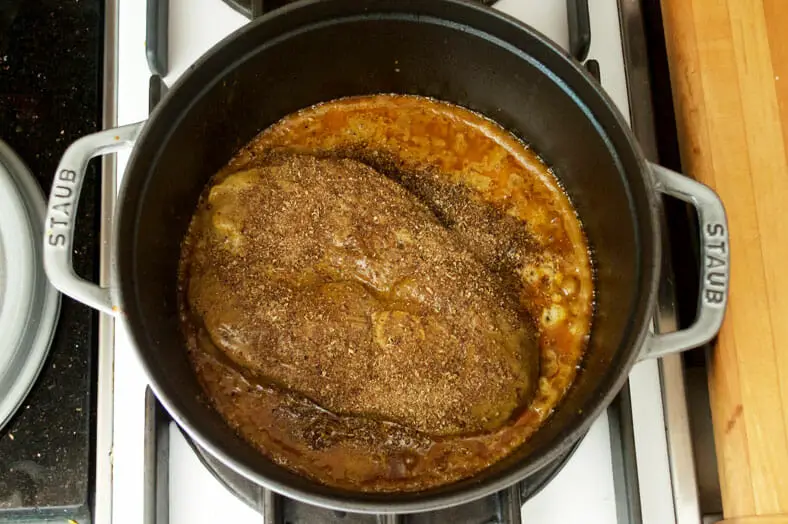
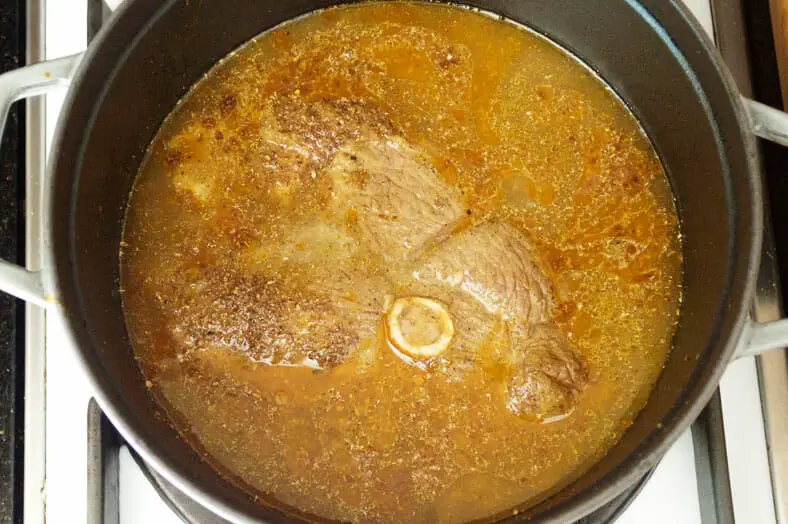
Some recipes might have you fry onions before the lamb or, in our case, only once the lamb’s begun to braising. No matter your preference, the goal is to have onions in the braise before you “set and forget” your nihari. Fry your onions and add them in with the braising lamb and submerge it with more water until everything is well covered. Bring the pot to a quick boil, then let your nihari simmer all the way until it’s cooked and done.
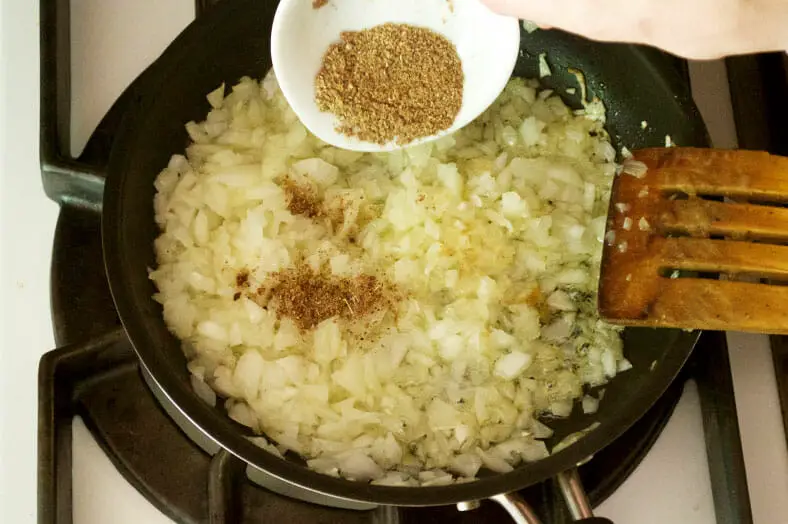
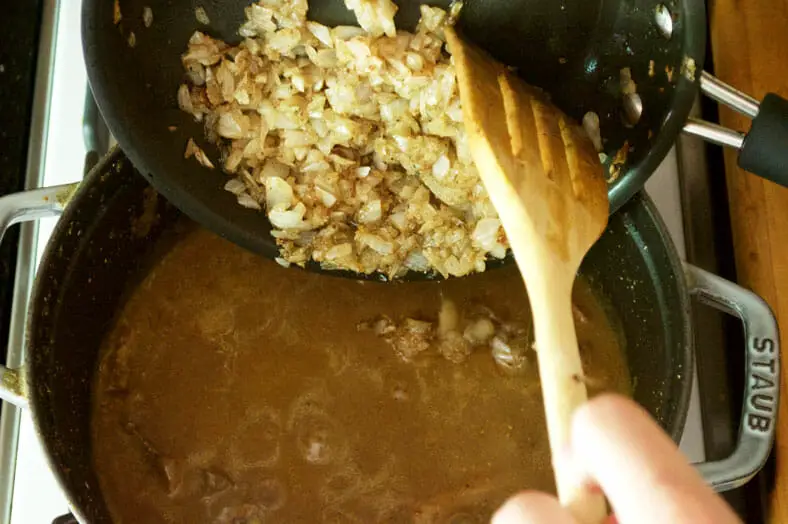
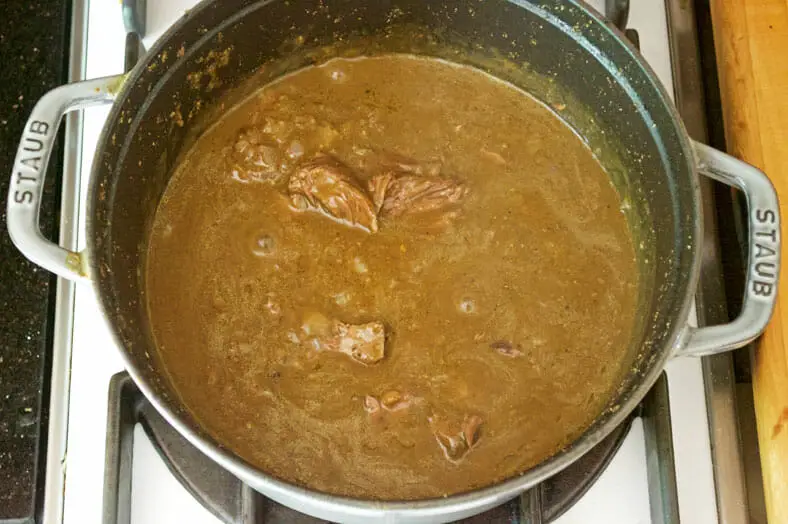
What results is a nihari made of super soft lamb covered in a thickened, rich and delicately spiced sauce that goes great on any rice, naan, or even straight up. Enjoy!
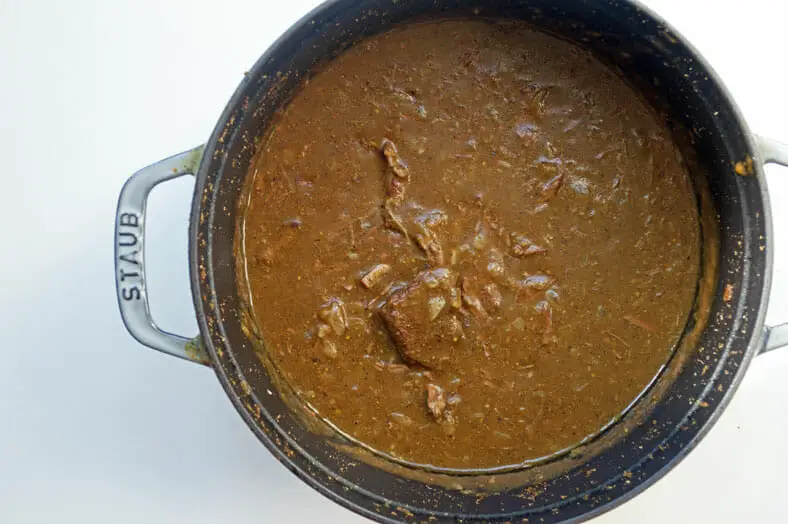
OUR TAKE ON THE RECIPE
There were a lot of great recipes to choose from, but we wanted to be sure that our reference recipe followed Pakistani traditions in the preparation. Along those lines, we found a recipe for traditional Pakistani nihari that was convincing enough for us to use it as our source.
Perhaps one of the key changes for us in the recipe was that we featured more onions in the actual nihari itself as opposed to just as a garnish. We’d seen elsewhere nihari with onions cooked into the stew and even pre-fried to flavor the oil into which the lamb meat sears. For the sake of moving the recipe along, however, we only prepared the onions after the lamb had begun to braise and added it in once they were ready.
For the spice mixture, we evened out the proportions of spices to the nearest teaspoon. This led to a slight net increase of the overall spice used and added, but we found it to be a great way to add even more flavor to an already delicious dish. Alternatively, the leftover spice mix can make for a great garnish on finished nihari or rice or anything else.
Finally, we made a swap in for rice flour instead of regular flour. It requires a little more water than usual in order to accommodate to the different characteristics of rice flour (which we account for in the recipe), but that way it creates a slightly healthier, gluten-free option for the recipe as well.
What you get in the end is a nihari that is unforgettably flavorful and, thanks to all the spices used, a palate that’s left abuzz.
Enjoy!
What would you garnish on top of your nihari? Comment below!
